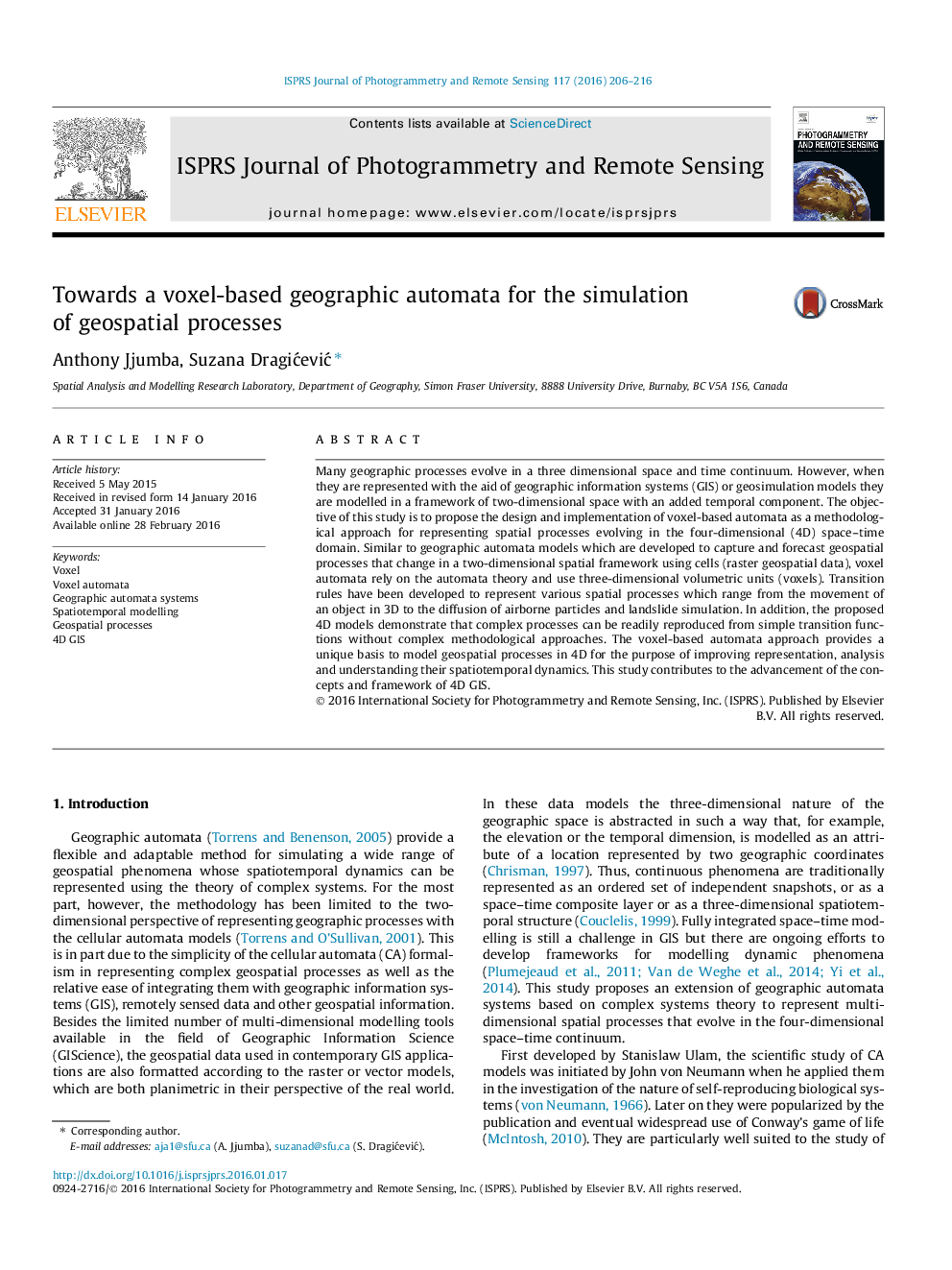| کد مقاله | کد نشریه | سال انتشار | مقاله انگلیسی | نسخه تمام متن |
|---|---|---|---|---|
| 554906 | 1451257 | 2016 | 11 صفحه PDF | دانلود رایگان |
Many geographic processes evolve in a three dimensional space and time continuum. However, when they are represented with the aid of geographic information systems (GIS) or geosimulation models they are modelled in a framework of two-dimensional space with an added temporal component. The objective of this study is to propose the design and implementation of voxel-based automata as a methodological approach for representing spatial processes evolving in the four-dimensional (4D) space–time domain. Similar to geographic automata models which are developed to capture and forecast geospatial processes that change in a two-dimensional spatial framework using cells (raster geospatial data), voxel automata rely on the automata theory and use three-dimensional volumetric units (voxels). Transition rules have been developed to represent various spatial processes which range from the movement of an object in 3D to the diffusion of airborne particles and landslide simulation. In addition, the proposed 4D models demonstrate that complex processes can be readily reproduced from simple transition functions without complex methodological approaches. The voxel-based automata approach provides a unique basis to model geospatial processes in 4D for the purpose of improving representation, analysis and understanding their spatiotemporal dynamics. This study contributes to the advancement of the concepts and framework of 4D GIS.
Journal: ISPRS Journal of Photogrammetry and Remote Sensing - Volume 117, July 2016, Pages 206–216
